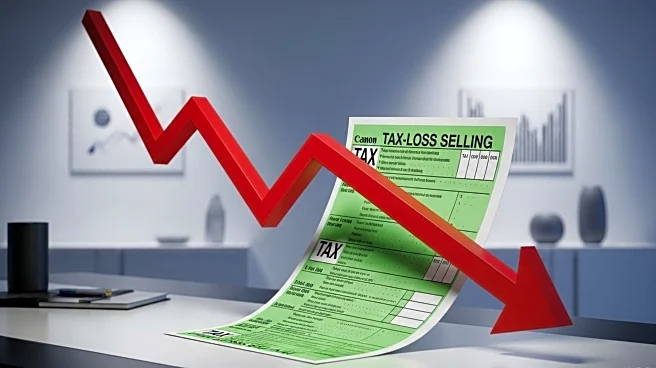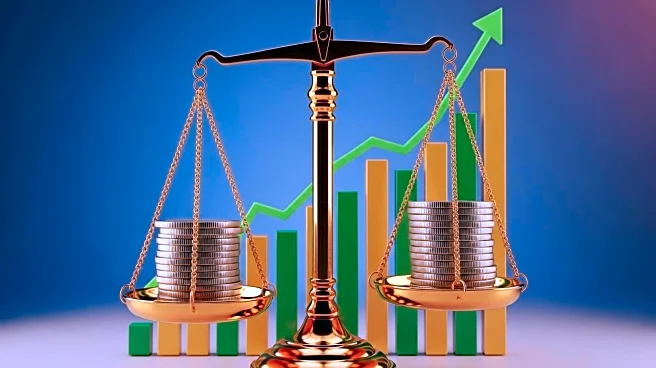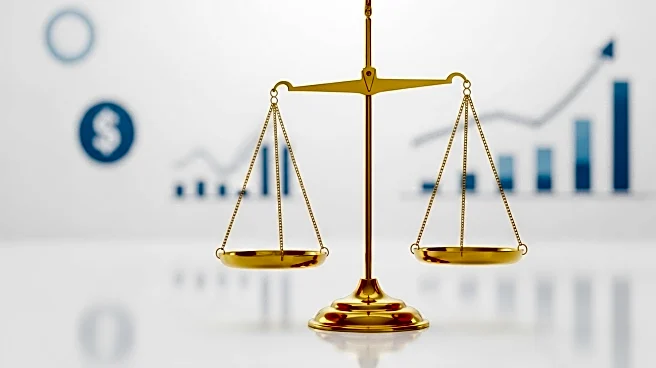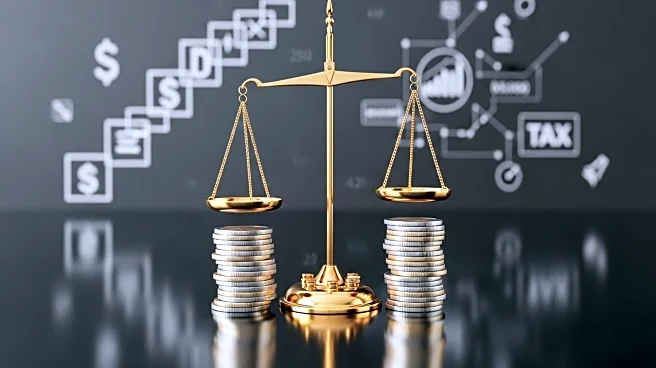What is the story about?
What's Happening?
The IRS has announced changes to the capital gains tax brackets for the 2026 tax year, allowing individuals and married couples to earn more before reaching higher tax rates. For 2026, individuals with taxable income up to $49,450 and married couples filing jointly with incomes up to $98,900 will qualify for a 0% capital gains tax rate. Those earning up to $545,500 individually or $613,700 jointly will pay a 15% rate, while incomes above these thresholds will incur a 20% tax rate. These adjustments aim to provide relief by allowing taxpayers to make more money while still qualifying for lower tax rates. The IRS also highlighted the strategy of tax-loss harvesting, where investors can sell underperforming investments to offset gains and reduce their tax burden.
Why It's Important?
These changes are significant as they offer taxpayers the opportunity to manage their investments more strategically, potentially reducing their tax liabilities. By increasing the income thresholds for lower tax rates, the IRS is providing a form of relief amidst ongoing economic challenges. This adjustment could encourage more investment activity, as individuals and couples may feel more confident in realizing gains without facing higher tax rates. The strategy of tax-loss harvesting further empowers investors to optimize their portfolios and minimize taxes, which could lead to increased financial planning and investment activity.
What's Next?
Taxpayers and financial planners will likely begin strategizing for the upcoming tax year, considering the new brackets and potential tax-saving strategies. As the year-end approaches, investors may engage in tax-loss harvesting to offset gains realized earlier in the year. The IRS changes will also prompt discussions among financial advisors and their clients about optimizing investment portfolios and tax planning strategies for 2026.
Beyond the Headlines
The adjustments to capital gains tax brackets reflect broader economic policies aimed at stimulating investment and economic growth. By providing more favorable tax conditions, the IRS is indirectly supporting market stability and encouraging long-term investment strategies. This could have ripple effects across various sectors, as increased investment activity may lead to job creation and economic expansion.
AI Generated Content
Do you find this article useful?













